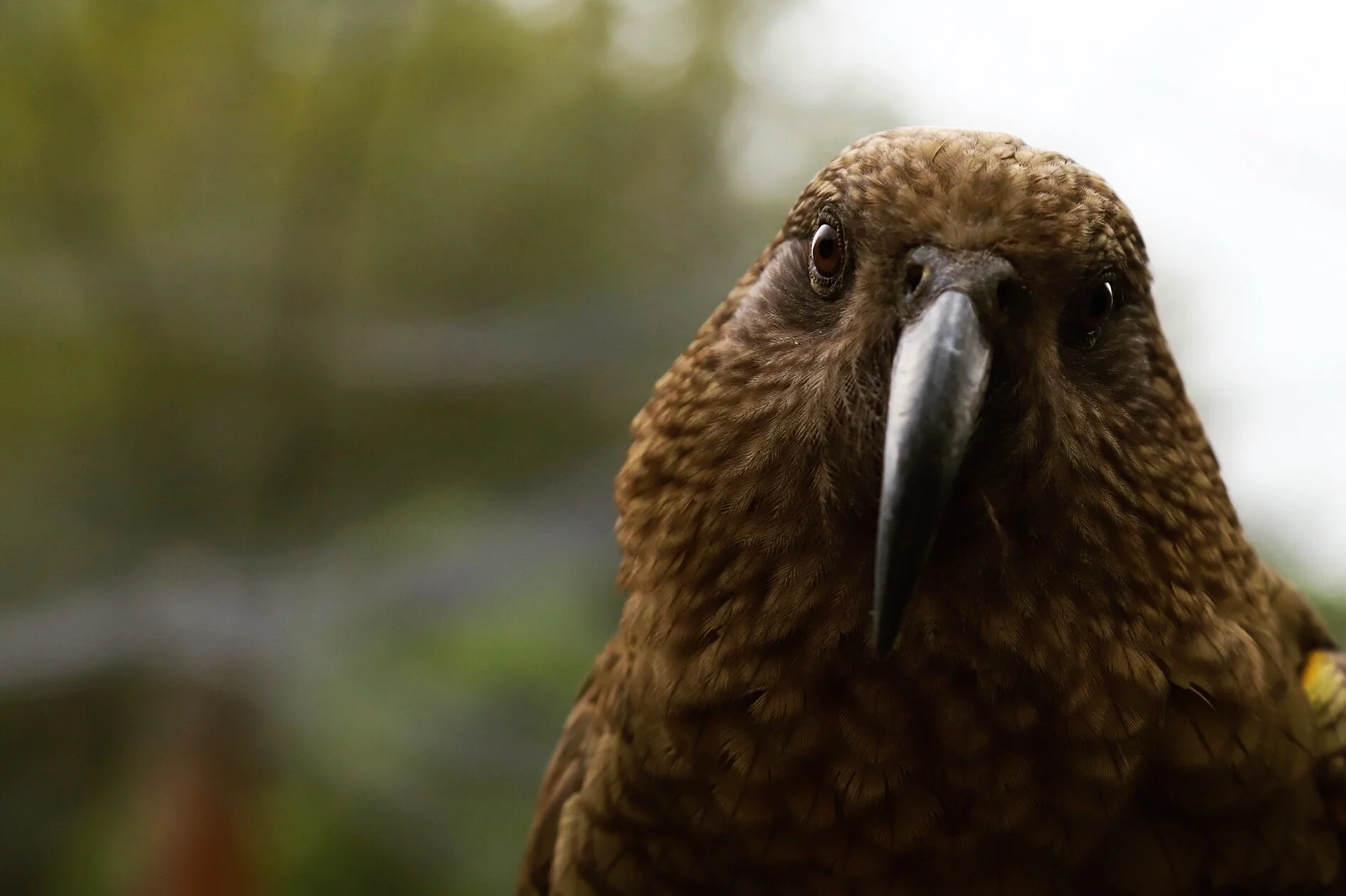August 19th, 2019
Predator control using aerial 1080 is known to benefit kea at a population level. In one recently published study, kea nest survival at a monitored site increased from 46.4%, before the application of 1080, to 84.8% after the application of 1080 (Kemp et al. 2018).
However, some individual kea have died in some operations as a result of 1080 poisoning, and this is thought to be in part due to their inquisitive nature and willingness to investigate novel or unfamiliar objects.
Unlike humans, many species of birds, including parrots, are able to perceive colours within the ultraviolet spectrum. Through this trial we aimed to examine whether the ability to see in UV affects the way in which different types and colours of cereal baits appear to kea, which in turn may have an influence on how kea respond to them.
In particular, this trial sought to determine whether kea are able to detect a visual difference between green dyed baits and plain, undyed baits, and between those that contain anthraquinone (a secondary repellent) or pyranine bio-marker, and those that do not.
Background
In 2018, ZIP ran a captive trial at Willowbank Wildlife Reserve (Christchurch), in which we found that repeated exposure to cereal baits containing a secondary repellent, anthraquinone, effectively ‘trained’ kea to avoid cereal bait during subsequent exposures – even when baits did not contain anthraquinone.
Prior to captive trials, it was unknown whether anthraquinone, which is thought to reflect in the UV spectrum, is visible to kea. This was a concern because, for the learned aversion to work consistently, baits laced with anthraquinone must be visually indistinguishable from those without anthraquinone.
ZIP also ran a trial in the Perth River valley (South Westland) using a bio-marker, pyranine, to assess the risk to kea from a proposed predator removal operation. The number of birds observed interacting with baits during this trial was higher than expected, and we suspected that kea may have been able to see – and therefore been influenced by – the fluorescent green ‘glow’ emitted by the pyranine. This trial presented a good opportunity to test whether that was in fact the case.
What did we do?
Our colleagues at the University of Auckland constructed a visual model based specifically on two species of parrot. The results of this methodology could be expected to apply to kea, as they are also a parrot species.
To inform this model, our colleagues at Callaghan Innovation took UV spectral measurements of 10 different types of non-toxic cereal bait using a fibre optics spectrometer.
The baits tested included the two bait types typically used in aerial operations (Wanganui #7 and RS5), both dyed green and undyed (which presents as a light tan colour), with and without anthraquinone, and undyed Wanganui #7 containing pyranine. Some of the baits contained cinnamon or orange lure/mask, while others did not.
What did we observe?
The model suggests that parrots (and therefore likely kea) are unable to visually detect the presence or absence of anthraquinone in cereal baits, at the concentrations used in ZIP’s kea risk mitigations.
However, parrot vision is able to discern between plain, undyed cereal baits and undyed cereal baits laced with pyranine; which suggests the UV reflectance of pyranine is highly visible to kea.
Based on the parrot visual model, kea could also be expected to detect a visual difference between green-dyed baits and plain, undyed baits (just as we can).
What does this mean for ZIP’s predator removal operations?
This study demonstrates the importance of considering how birds, rather than humans, perceive colours – particularly when dealing with an innately curious species like kea. We acknowledge that kea (and potentially other birds) are likely to use a combination of cues beyond just colour, i.e. scent, in deciding to interact with possible food items – our study did not investigate the role of those factors.
Importantly, we have determined that parrots, and presumably kea, are unlikely to be able to visually detect the presence or absence of anthraquinone in cereal baits. This lends support to the successful results of captive aversion training trials at Willowbank Wildlife Reserve, and subsequent use of aversion training to reduce risks to kea in the Perth River valley.
We may be unable to identify what drove the small sample of wild kea to interact with cereal bait laced with pyranine during the 2018 trial. However, we can conclude that these cereal baits would have looked different to the plain cereal baits these kea had previously been exposed to, and this may have influenced their behaviour.
Want to learn more?
Check out ZIP Technical Report #10.
Acknowledgements
Prof Anne Gaskett (University of Auckland) pioneered the ‘bird’s eye’ view model that Amy Martin adapted for our specific parrot purpose. Sebastiampillai Raymond undertook the spectral measurements for us on their equipment at Callaghan Innovation. We thank Gerald Smith (Victoria University) for answering our many emails on UV spectral measurements when we first thought anthraquinone may cause us issues, and for making the connection for us with Sebastiampillai.

